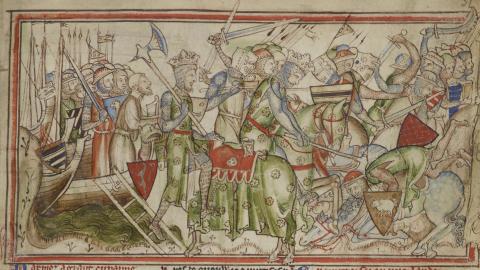Meuse-Argonne in WW1
Just ten days after America's one day victory debut, its army fought in the final Allied attack of World War I. The Meuse-Argonne Offensive is arguably the bloodiest battle in American history. And it would take seventy years for one of the fallen to be awarded his Medal of Honor.
'During the Meuse-Argonne battle as a whole the American Expeditionary Force fired off a greater weight of ammunition than had the Union side during the entire American Civil War.'
David Stevenson '1914-1918 The History of the First World War'
In June 1918, Russia was gone and Paris looked set to fall. And yet, during that summer of 1918, the long succession of Allied defeats turned into successful counter attacks: Including, east of Verdun, in the St-Mihiel salient, the first major solo offensive by the US army. These individual operations culminated between 26-28 September in a co-ordinated assault all along the Western Front, from Flanders to the Argonne. But unlike September 1915, and April 1917, these attacks succeeded, sealed air and sea dominance, and coincided with victories against the Turks in the East.
Germany had planned an organised withdrawal to consolidate and hold their numerous advances. But enough key figures, most noticeably German General Ludendorff, believed it would be seen as a retreat and would weaken precarious public confidence and the resolve of their dwindling military supporters.
But now, the Germans had no choice, as the Allies combined new tactics with fresh American reinforcements and forced the German backwards. The senseless slaughter seen at the Somme, where men and resources were repeatedly thrown at the same objective, was changed for a strategy of short, surprise attacks which were suspended before enemy reinforcements could be called. Germany was forced to adopt a new strategy of tactical retreat with sporadic counter-attacks in the hope of persuading the Allies to negotiate a reasonable peace.
As part of the Allied push forward, the French Marshal Foch asked the Americans to concentrate on the Meuse-Argonne area. The American attack on the forested hills of St Mihiel had seen over half a million Americans (and over 100,000 French) force a German withdrawal in just over a day. Such success helped the Allies believe that even the Hindenburg Line (the German defensive line constructed on French territory) was there for the taking. The Americans would attack on 26 September in the Meusse Argonne area as part of a much larger push along the whole front.
But the instant hit of victory seen at St Mihiel was not to be repeated. On 26 September, American commander John Pershing sent his men through the 'formidable' terrain of the Meusse-Argonne battlefield and up against entrenched German defences. Pershing believed that speed and sheer weight of numbers, his troops outnumbered the enemies by eight to one on the first day, would secure him another decisive victory.
At first, the Americans, under cover of fog, made surprisingly good progress. But soon, German machine guns and the higher ground they occupied, combined to slow the American attack to a standstill. Worse, supply lines were stretched and so chaotic that some on the American front line were fighting without food. Another fortnight would pass before they even reached the eastern section of the Hindenburg Line, the 'killing grounds' of Kriemhilde Stellung. Finally, after 47 days, and with over 26,000 Americans dead, the Meuse attack ended on 11 November, what we now know as Armistice Day.
The battle of Meusse-Argone remains arguably the bloodiest battle in American history with 26,277 dead. They are commemorated at America's largest European cemetery on land captured by the 32nd Division. One of the nine Medal of Honor recipients buried there is the only African American recipient of the honour in the First World War, Freddie Stowers. The corporal briefly led his platoon when everyone senior was wiped out; the Germans had feigned surrender, so the Americans let their guard down only to see half their number cut down by German soldiers. Recovering quickly, and despite being shot twice, he urged his men on, and they successfully overran the German position. Stowers died soon after. The grandson of a slave, he had freely fought and died for his country.
In 1991, U.S President George Bush posthumously presented Freddie's two surviving sisters with his medal.















